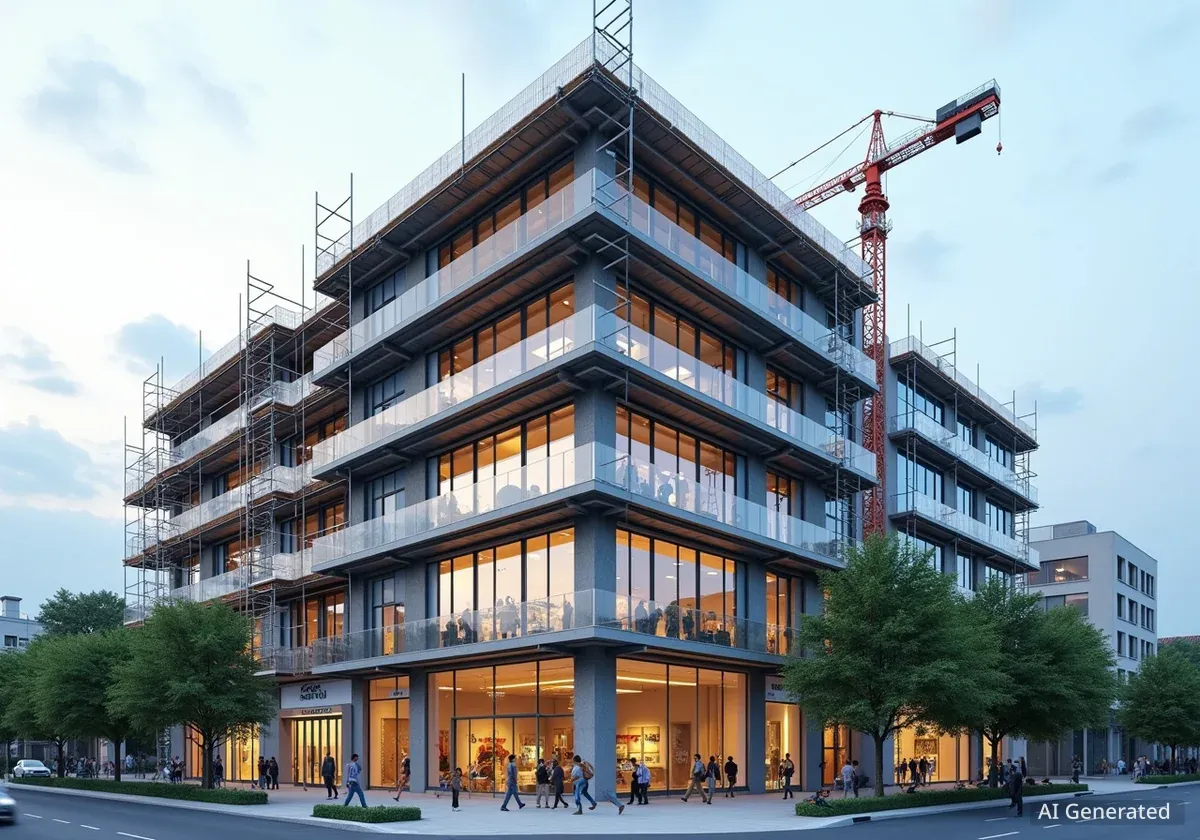A landmark building in San Francisco's Union Square is poised for a major transformation. Macy's has entered into an agreement with local developer TMG Partners to reimagine its flagship store, a fixture in the shopping district for over 80 years. This move signals a new direction for the iconic property, which had previously been slated for potential closure.
The partnership brings a fresh perspective to the future of the 600,000-square-foot complex. While plans are in the early stages, the focus is on creating a mixed-use space that could include housing, retail, and offices. For now, Macy's will continue to operate the store through the end of the year and into the first quarter of the next.
Key Takeaways
- Real estate firm TMG Partners will lead the redevelopment of the iconic Macy's building in Union Square.
- The plan involves transforming the single-use department store into a mixed-use property with potential for retail, housing, and offices.
- Macy's will continue its operations in the building through the holiday season and the first quarter of the next year, with no closing date set.
- City leaders and business alliances have expressed strong optimism about the project's potential to revitalize the area.
A New Vision for a Historic Landmark
The future of one of Union Square's most recognizable buildings is now in the hands of TMG Partners, a real estate investment and property management firm with extensive experience in the Bay Area. The firm has been selected by Macy's to spearhead the redevelopment of its sprawling downtown complex.
This decision comes after Macy's announced last year that it would eventually close the flagship location. The new agreement provides a clear path forward, replacing uncertainty with a concrete plan for revitalization.
TMG Partners is known for its work on dozens of development deals, including the rehabilitation of large, historic buildings. This background makes them a suitable choice for a project that requires a delicate balance between preserving a landmark's character and adapting it for modern use.
A Pillar of Union Square
The Macy's building has been more than just a department store; for 80 years, it has served as an anchor for the Union Square shopping district. Its holiday displays, particularly the puppies in the window, have become a cherished tradition for generations of Bay Area residents and visitors, making its future a matter of significant public interest.
The collaboration aims to create a solution that integrates the building back into the community in a new and dynamic way. The focus is shifting away from a single, massive retail footprint toward a more diverse and integrated urban space.
From Department Store to Dynamic Hub
The core of the new plan is to move away from the traditional department store model. Michael Covarrubias, Chairman of TMG Partners, described the approach as starting with a "clean sheet of paper" to determine the building's next chapter.
"To have the opportunity for us to work with Macy's hand in hand to come up with a new solution for the building that includes all the potential opportunities of rent, housing, retail, experiential office. It's the most exciting project we have," Covarrubias stated.
This statement highlights the wide range of possibilities being considered. The project is not just about filling empty space but about creating a vibrant, multi-faceted destination that serves different needs throughout the day and week.
Potential Uses for the Space
While specific blueprints have not been drawn, the development team is exploring several key areas:
- Residential Units: Adding housing to the building would align with the city's broader goals of increasing residential density in downtown cores. This could bring a permanent community to an area traditionally dominated by commerce and tourism.
- Modern Retail: The retail component will likely be reimagined. Instead of a single tenant, the space could host a curated mix of smaller shops, pop-ups, and "experiential" concepts that blend shopping with entertainment or services.
- Office Space: The plans also include the possibility of incorporating office space, catering to companies looking for a central, high-profile location with access to transit and amenities.
This mixed-use strategy is increasingly common in urban redevelopment, as it creates more resilient and consistently active properties compared to single-purpose buildings.
A Strategic Real Estate Move
In a statement, Macy's described the partnership with TMG as part of its "ongoing strategy to evaluate compelling options for its real estate portfolio." This reflects a broader trend among legacy retailers who are looking to unlock the value of their large, well-located properties in the face of changing shopping habits.
A Boost for Downtown San Francisco
The announcement has been met with enthusiasm from local leaders, who view it as a significant vote of confidence in the future of downtown San Francisco. The project represents a major private investment in an area that has been working to recover and redefine itself post-pandemic.
San Francisco Mayor Daniel Lurie called it a "good day for our city," adding, "We are creating the conditions for success for downtown. This is an example of what is working." His comments suggest the project aligns with the city's efforts to foster a more resilient and diverse downtown economy.
The Union Square Alliance, a business group dedicated to the area's vitality, also praised the forward-thinking approach.
"We're all being waiting for this for long time to understand what the future Macy has stood for 80 years," said Marisa Rodriguez, President and CEO of the Union Square Alliance. "They're looking at it from a very forward-thinking perspective."
For residents and visitors, the redevelopment offers the promise of new reasons to visit Union Square. Jeanine Elster, a Bay Area resident, expressed hope that the project would help maintain the area's energy. "It would be great to continue to have that vitality around here," she said.
With the store remaining open through the upcoming holiday season, the transition will be gradual. This allows the community to continue its traditions while looking forward to a new era for one of San Francisco's most beloved landmarks.





